Year 8 Simplification Worksheets
Algebra Addition Pyramids (A)
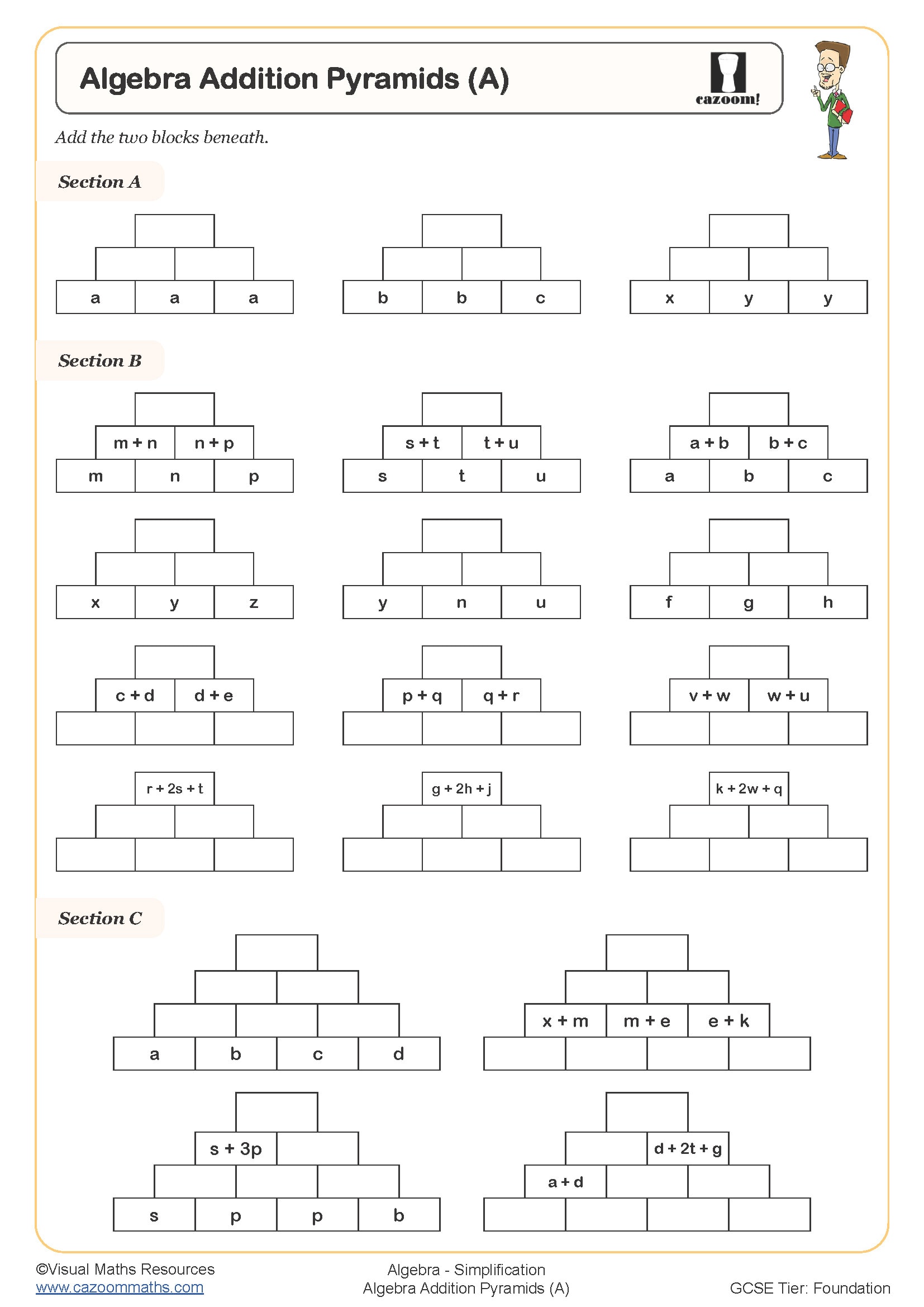
Algebra Addition Pyramids (B)
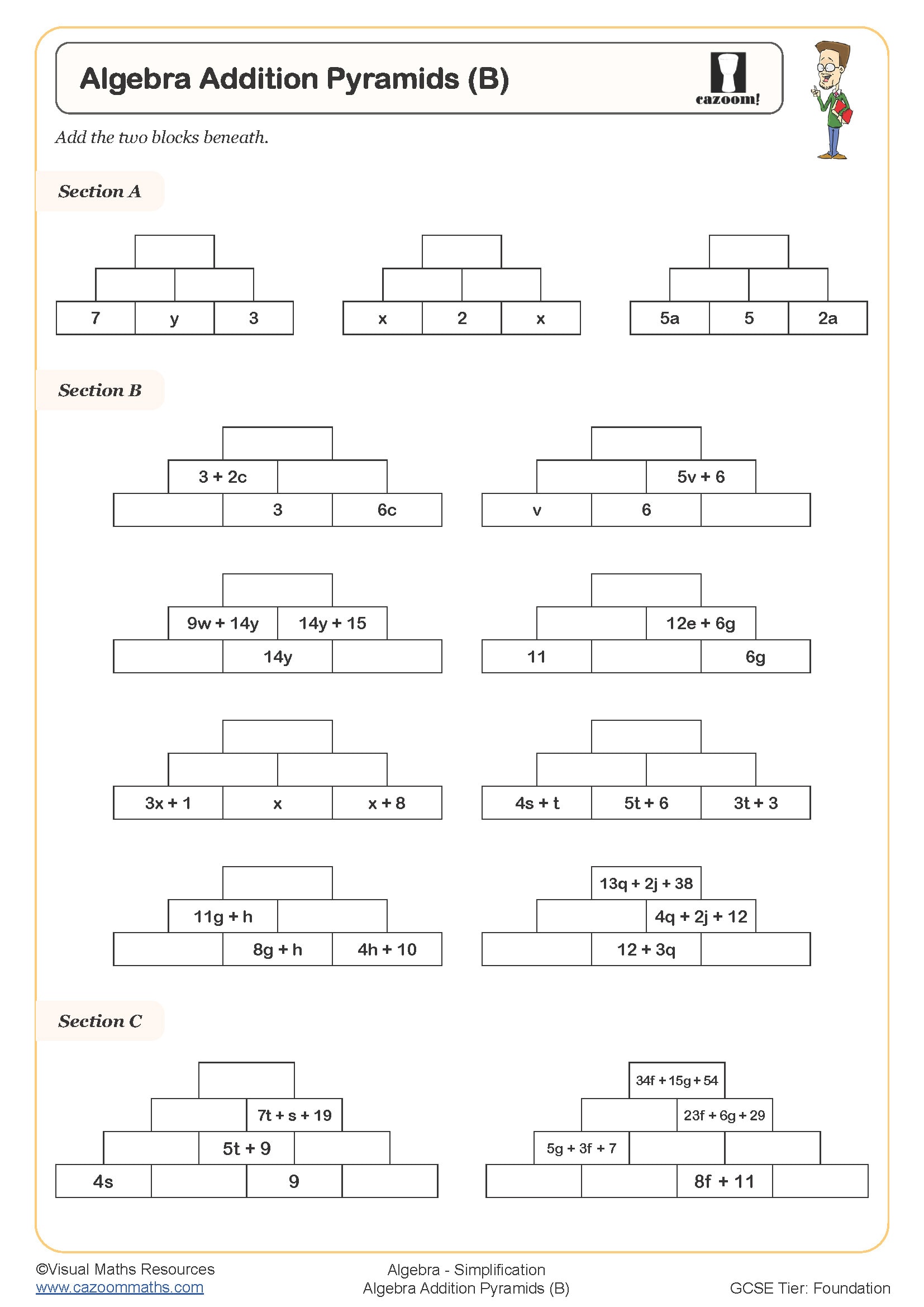
Algebra Addition Pyramids (C)
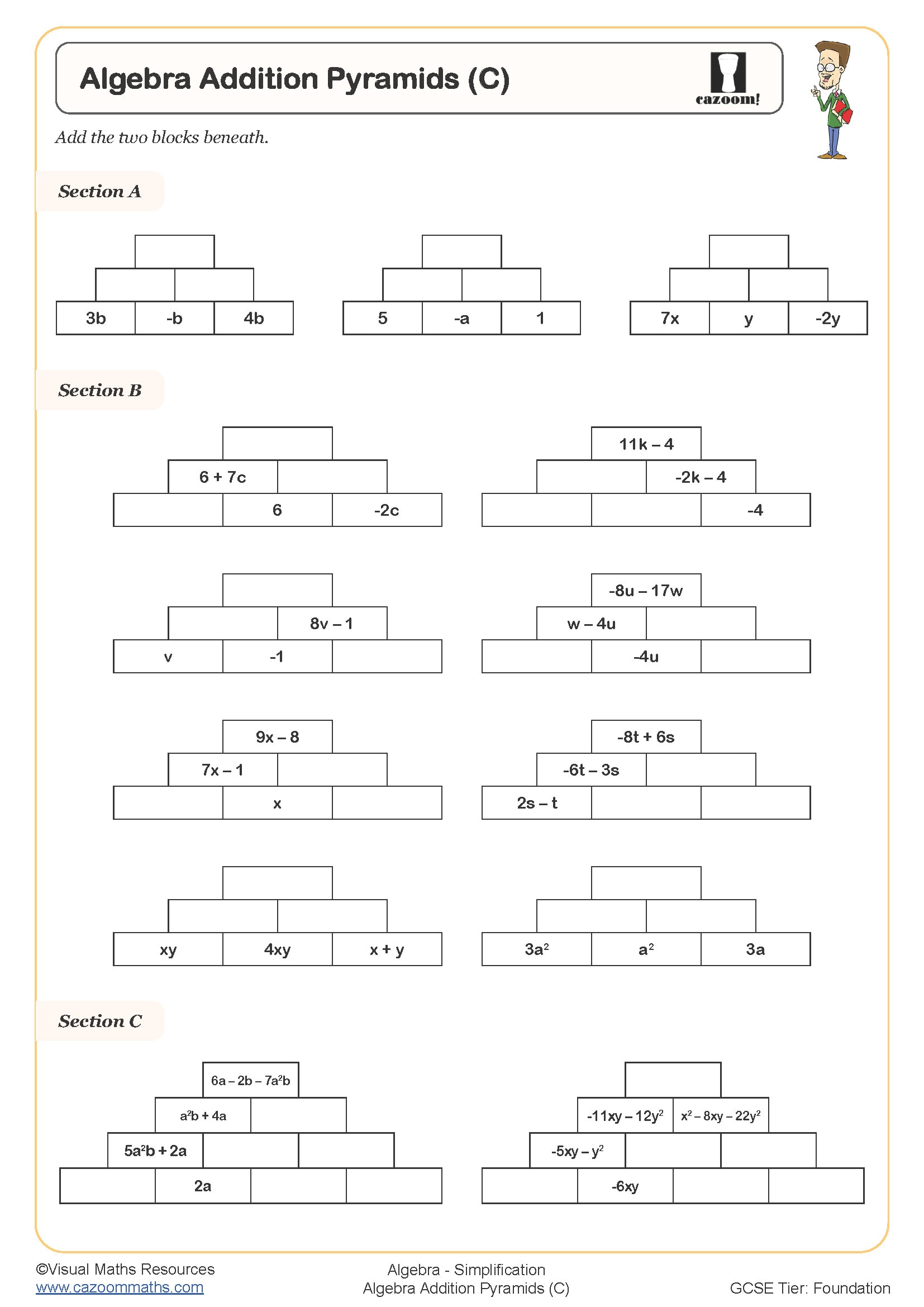
Algebra Multiplication Pyramids (A)
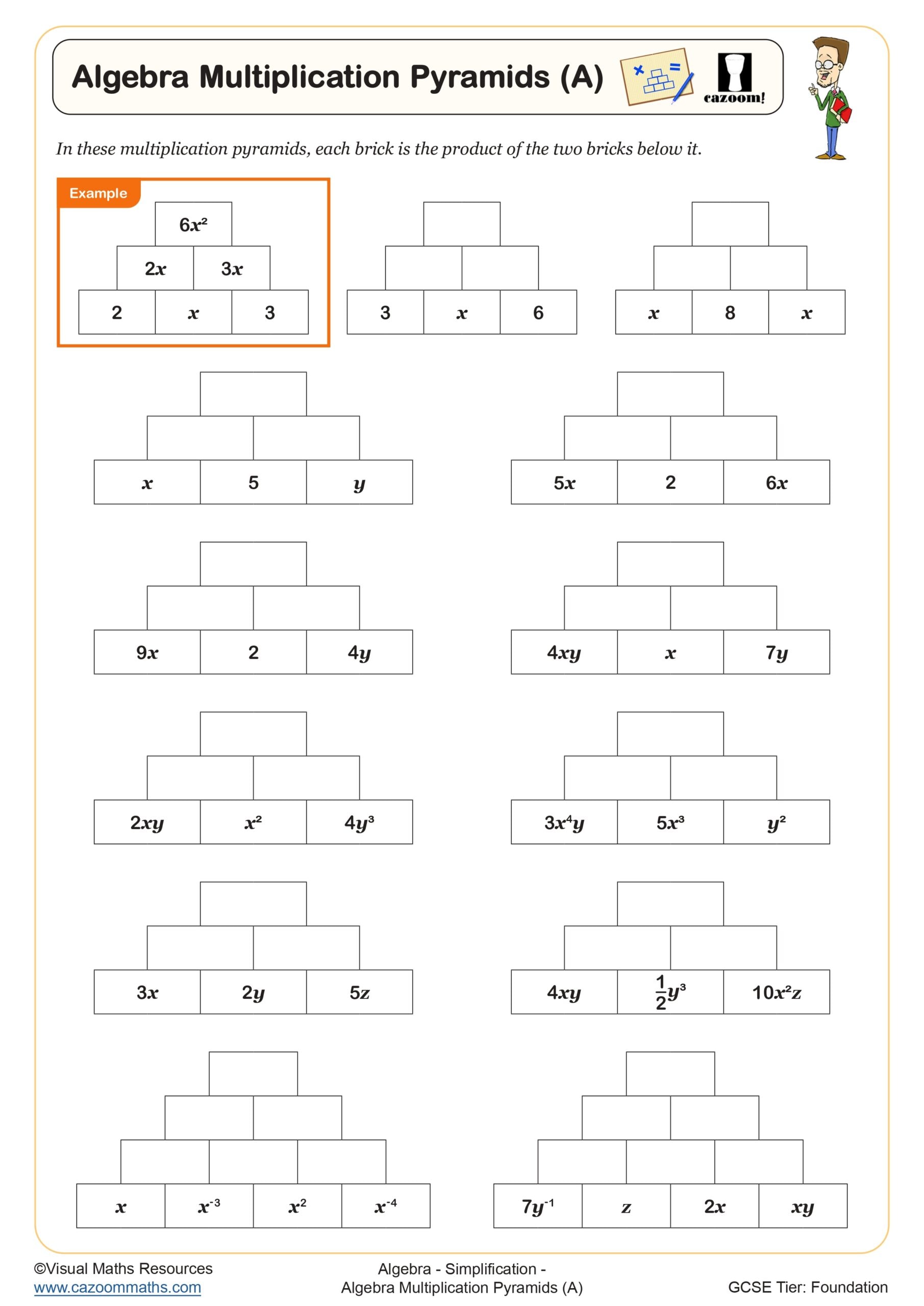
Algebra Multiplication Pyramids (B)
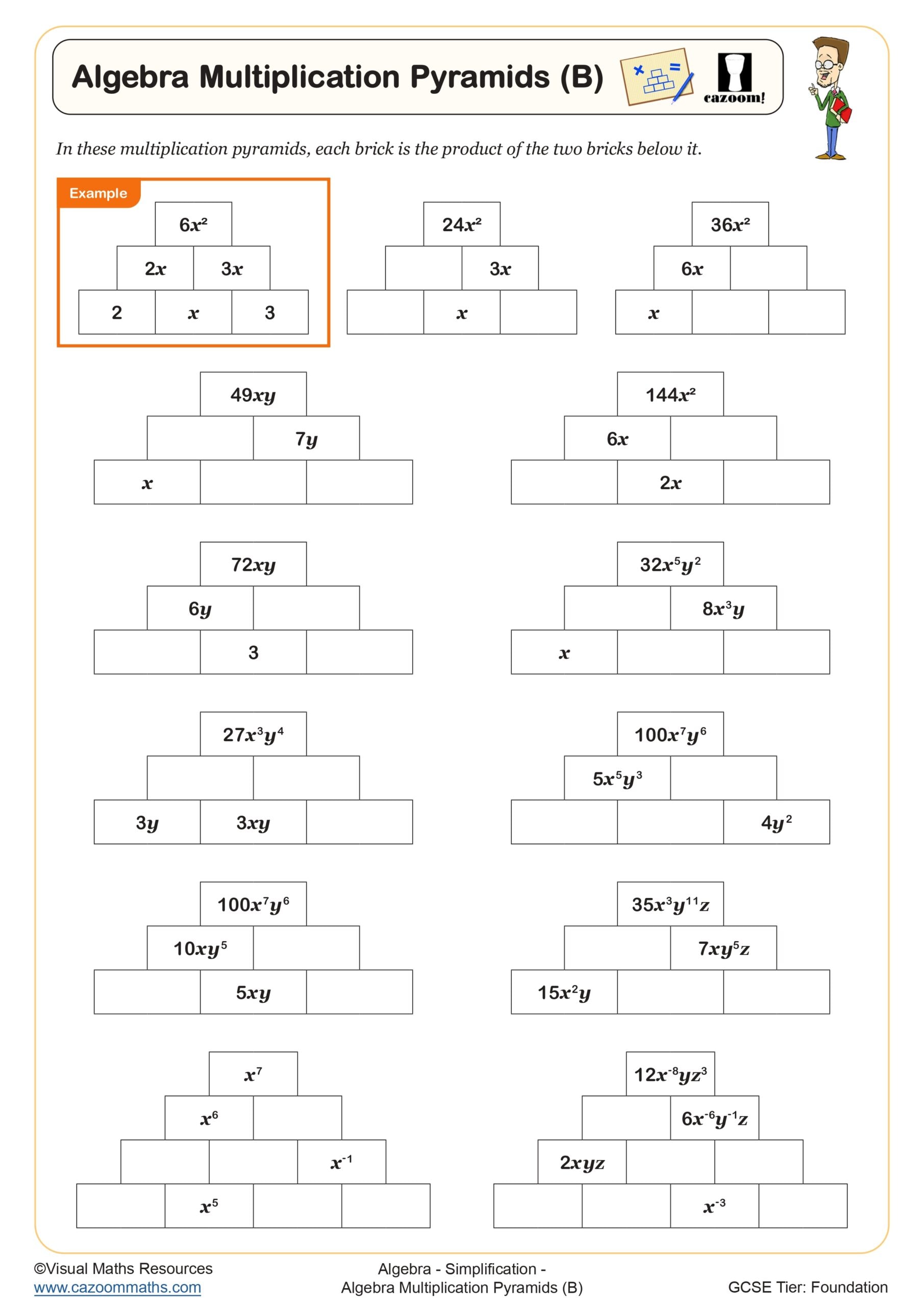
Algebraic Multiplication Grids
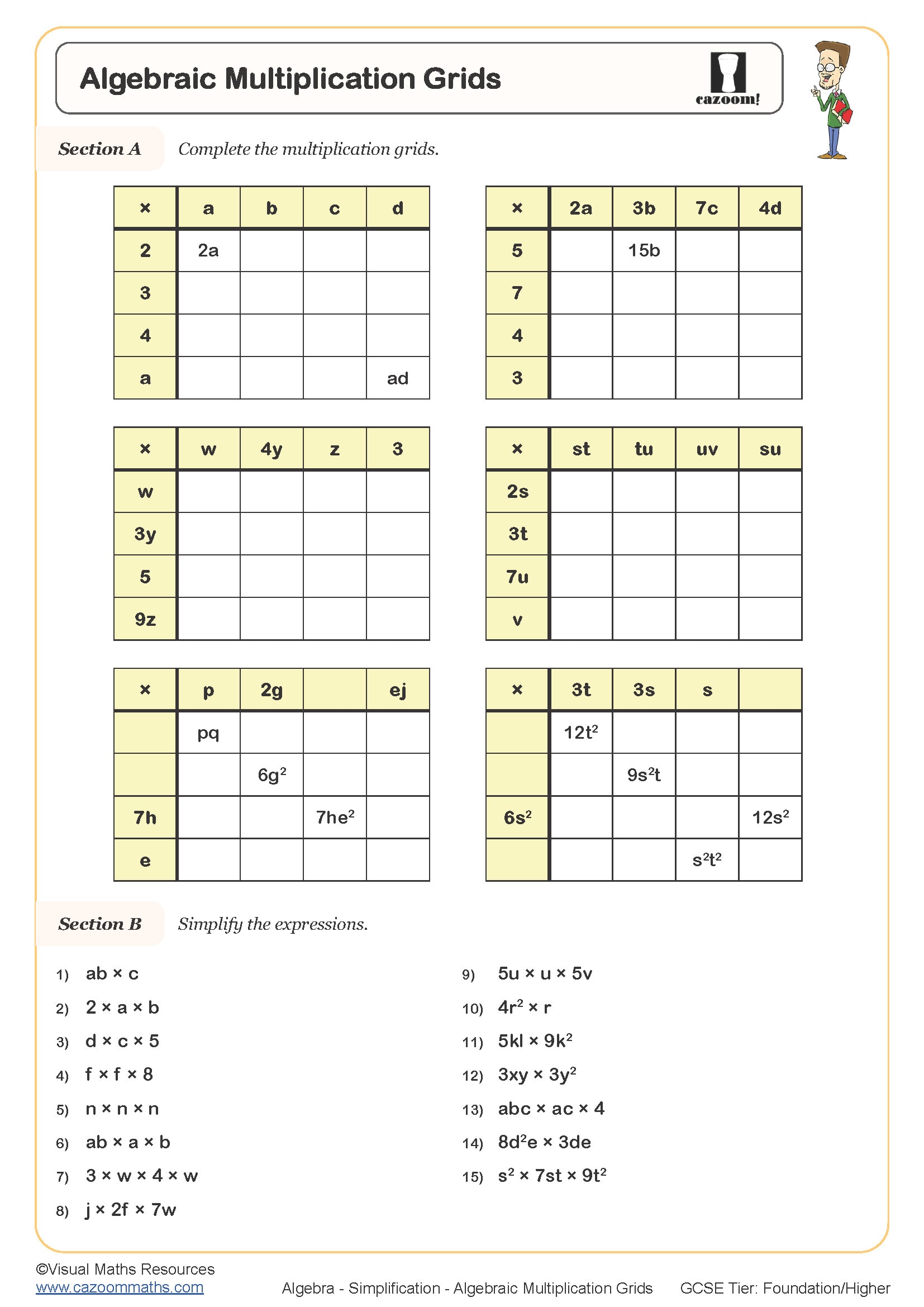
Algebraic Perimeters
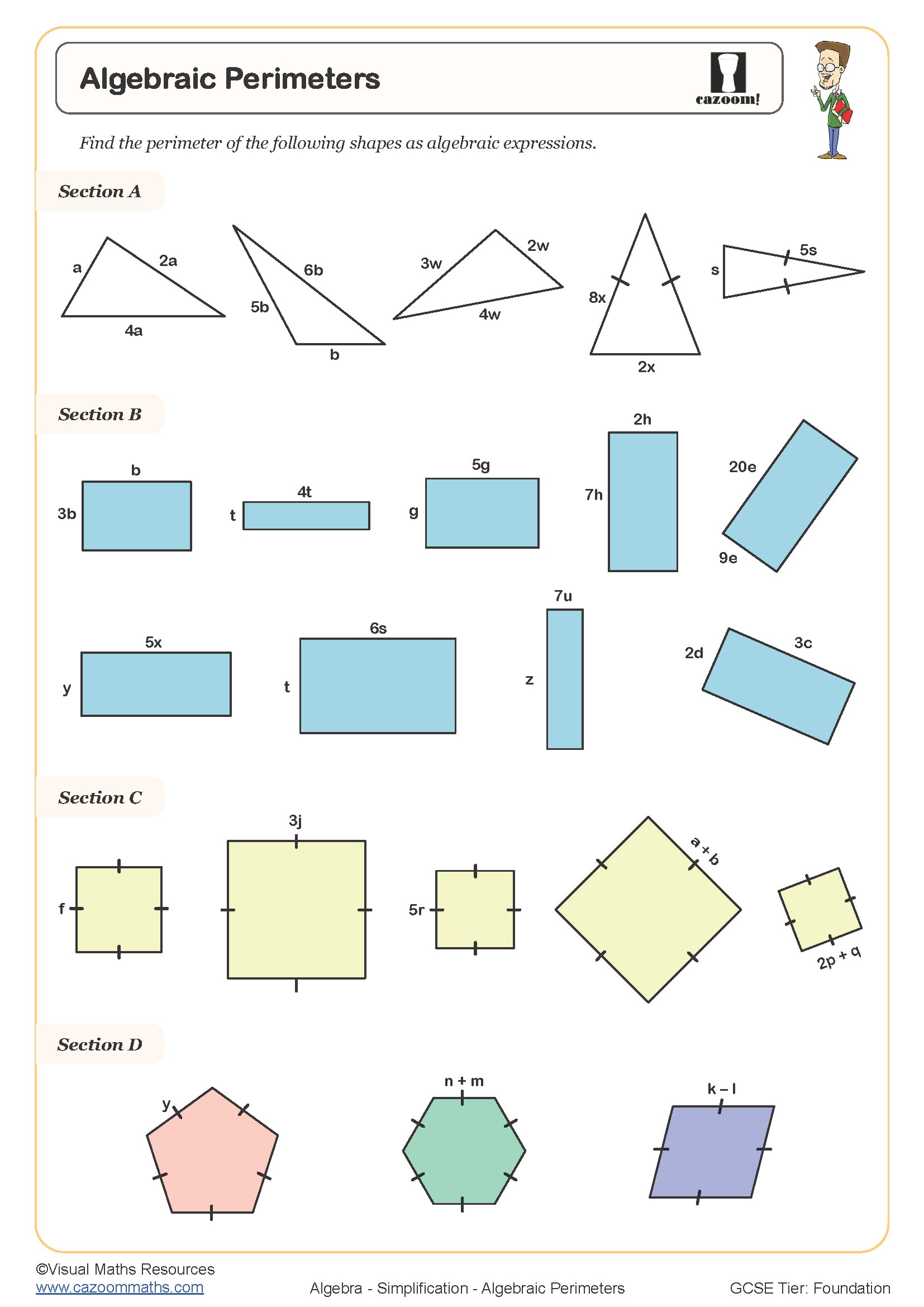
Collecting Like Terms - Using Algebra Tiles
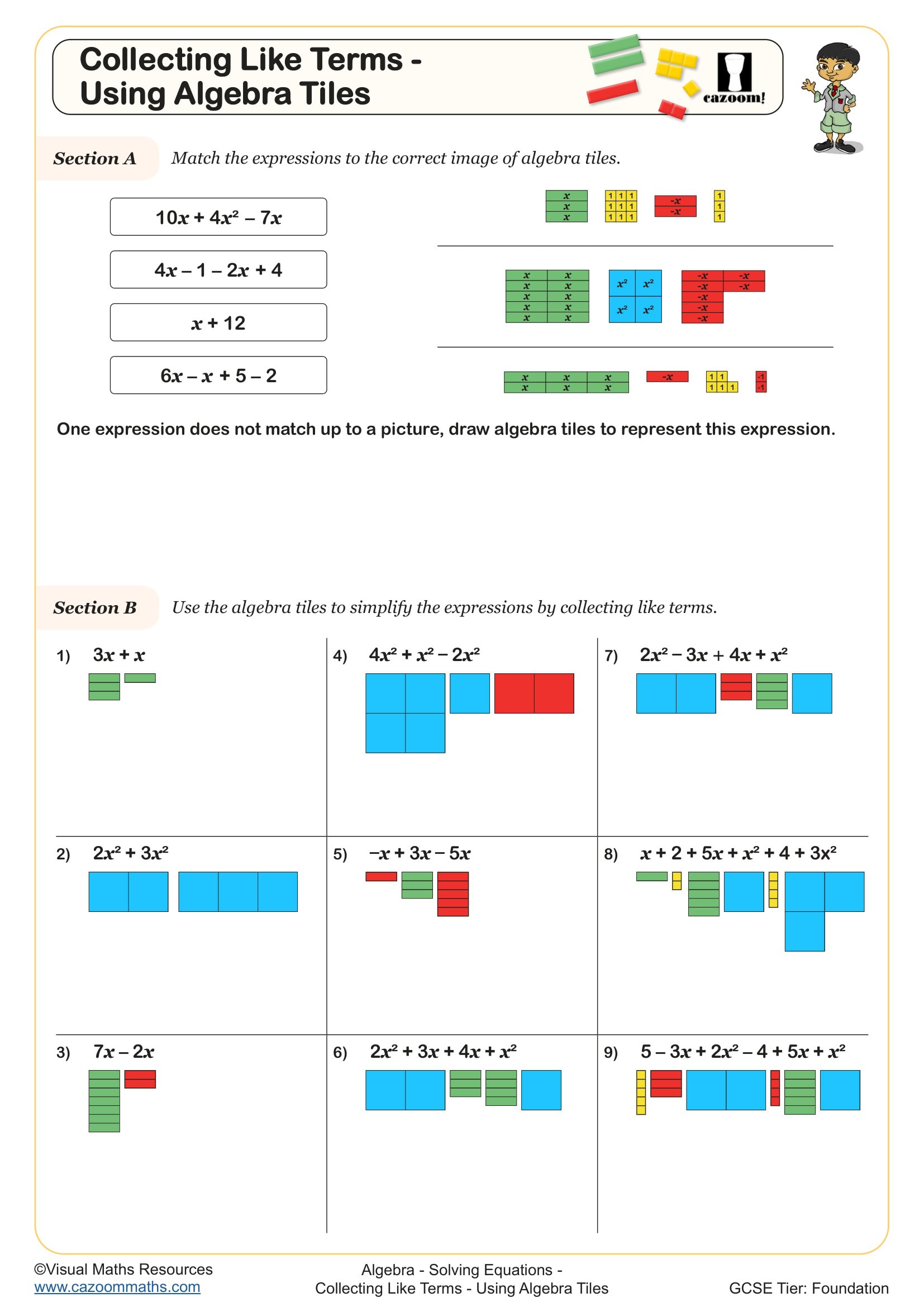
Fractional Coefficients
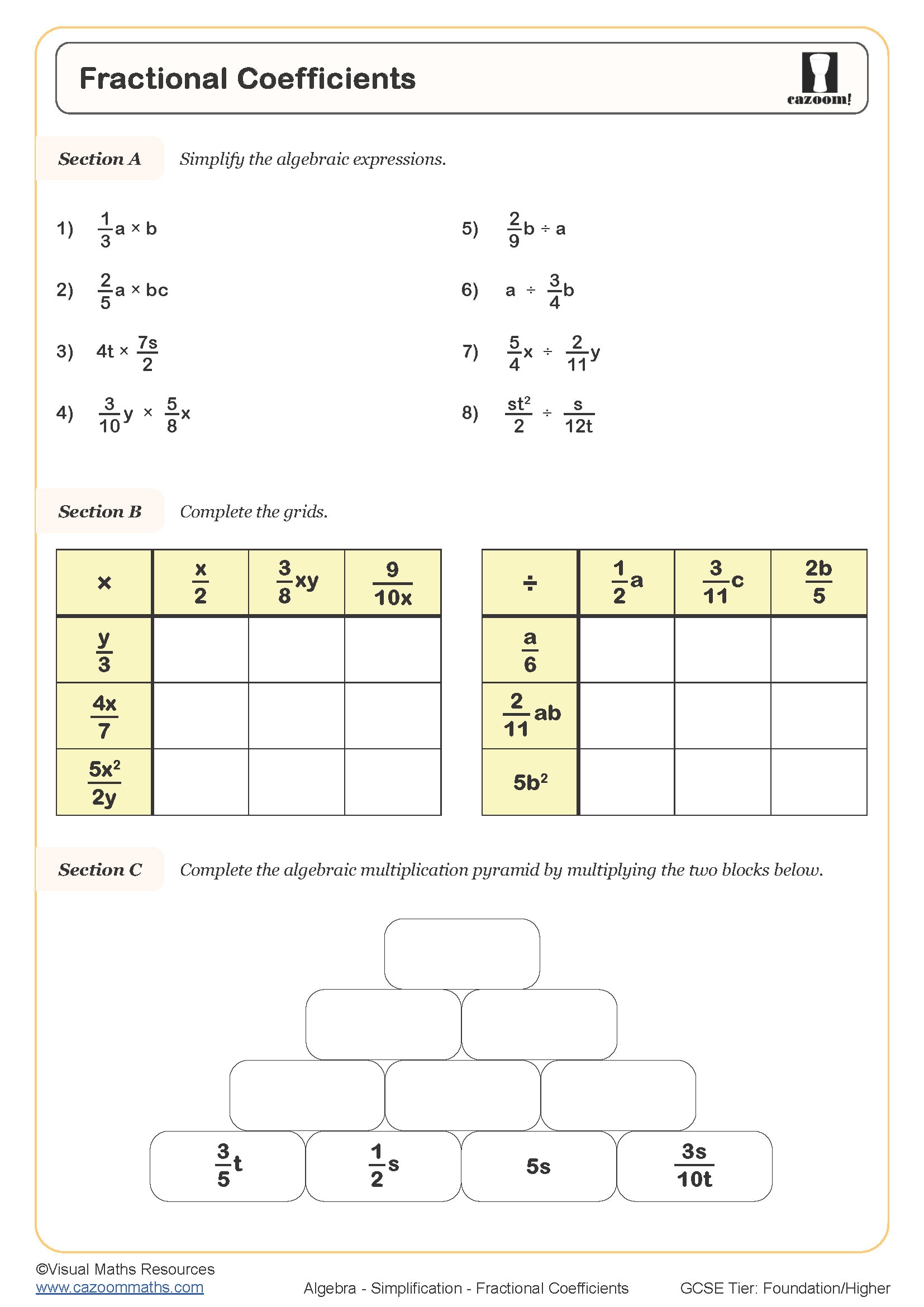
Language of Algebra
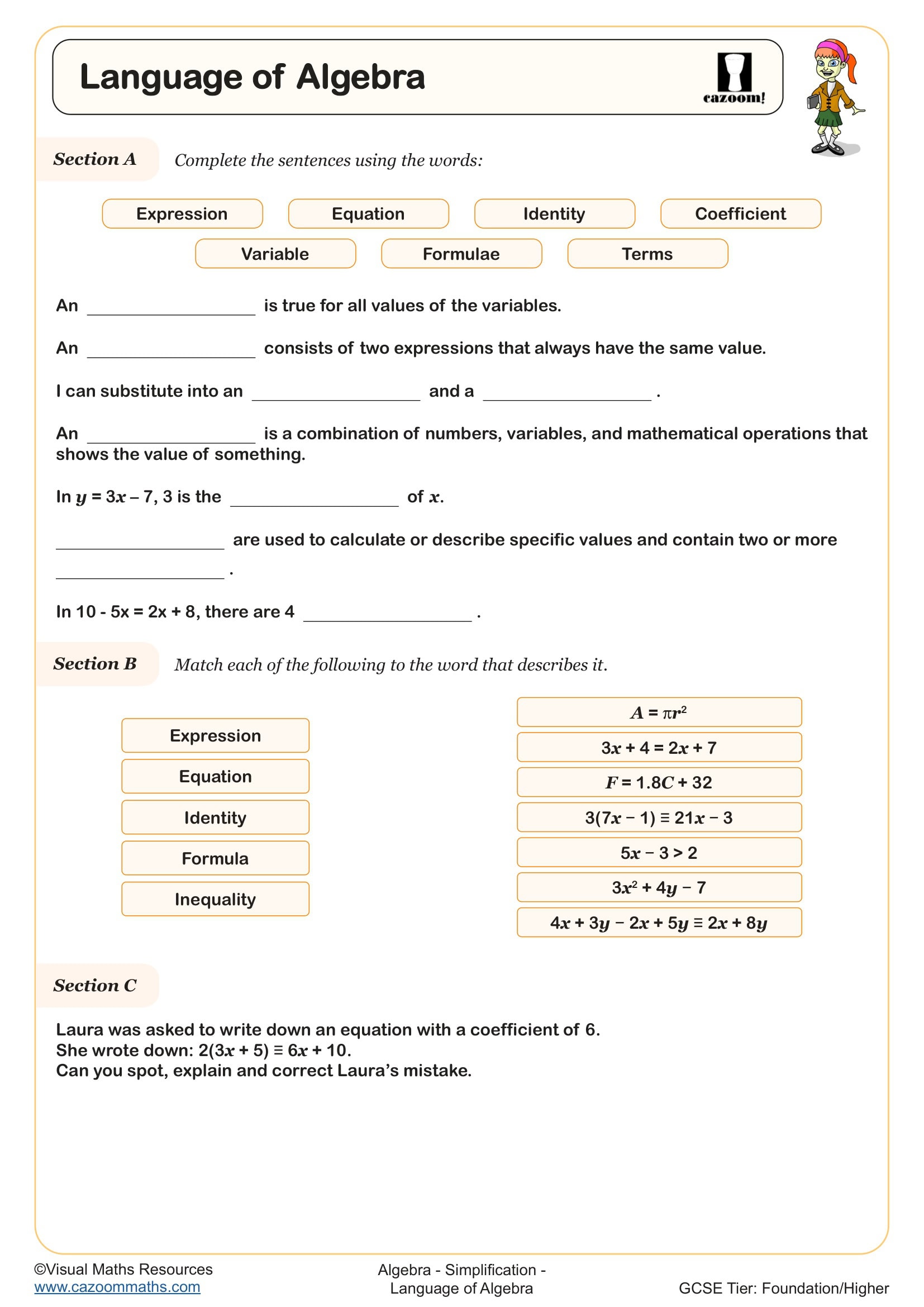
Manipulating Equations
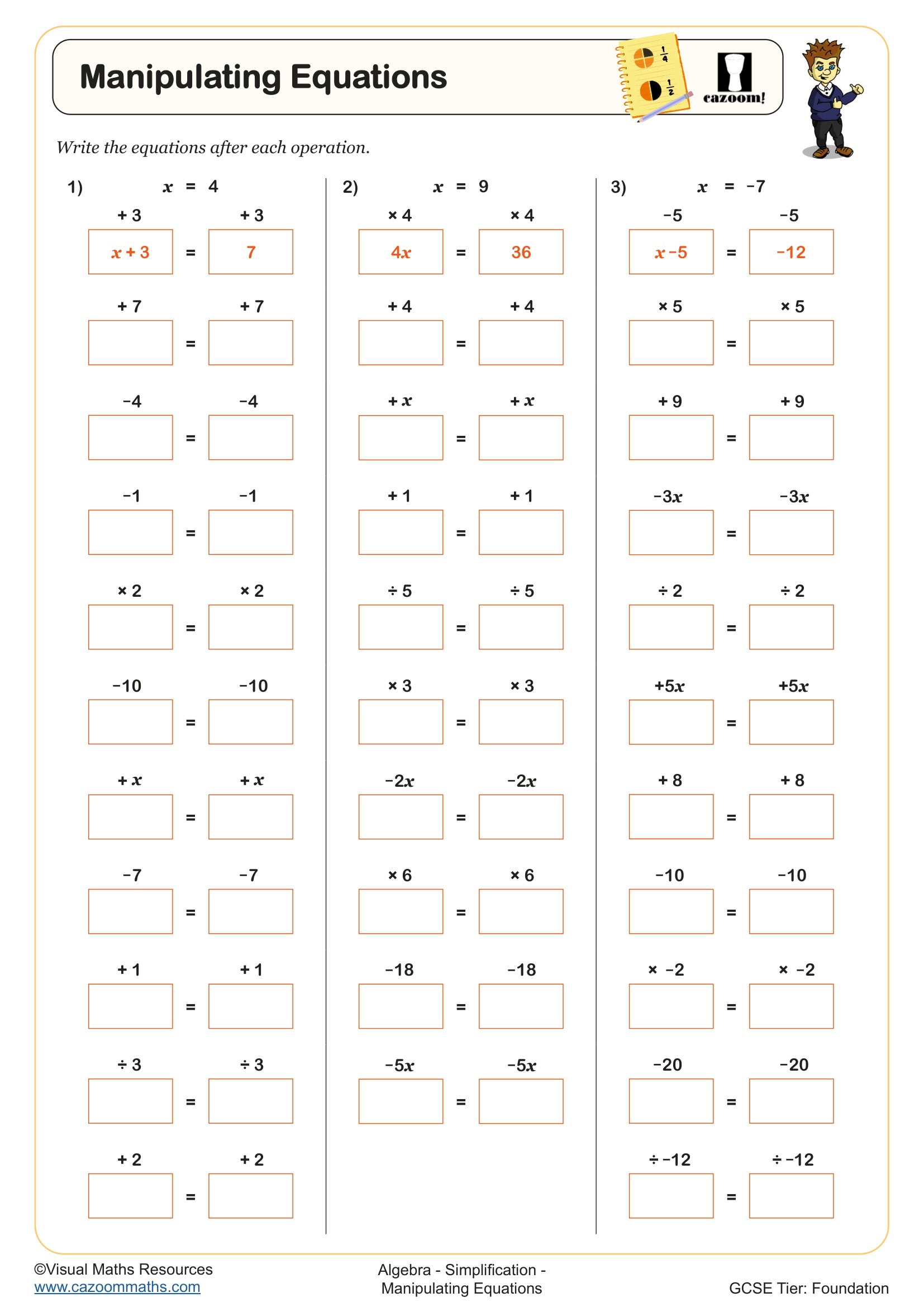
Simplifying Expressions
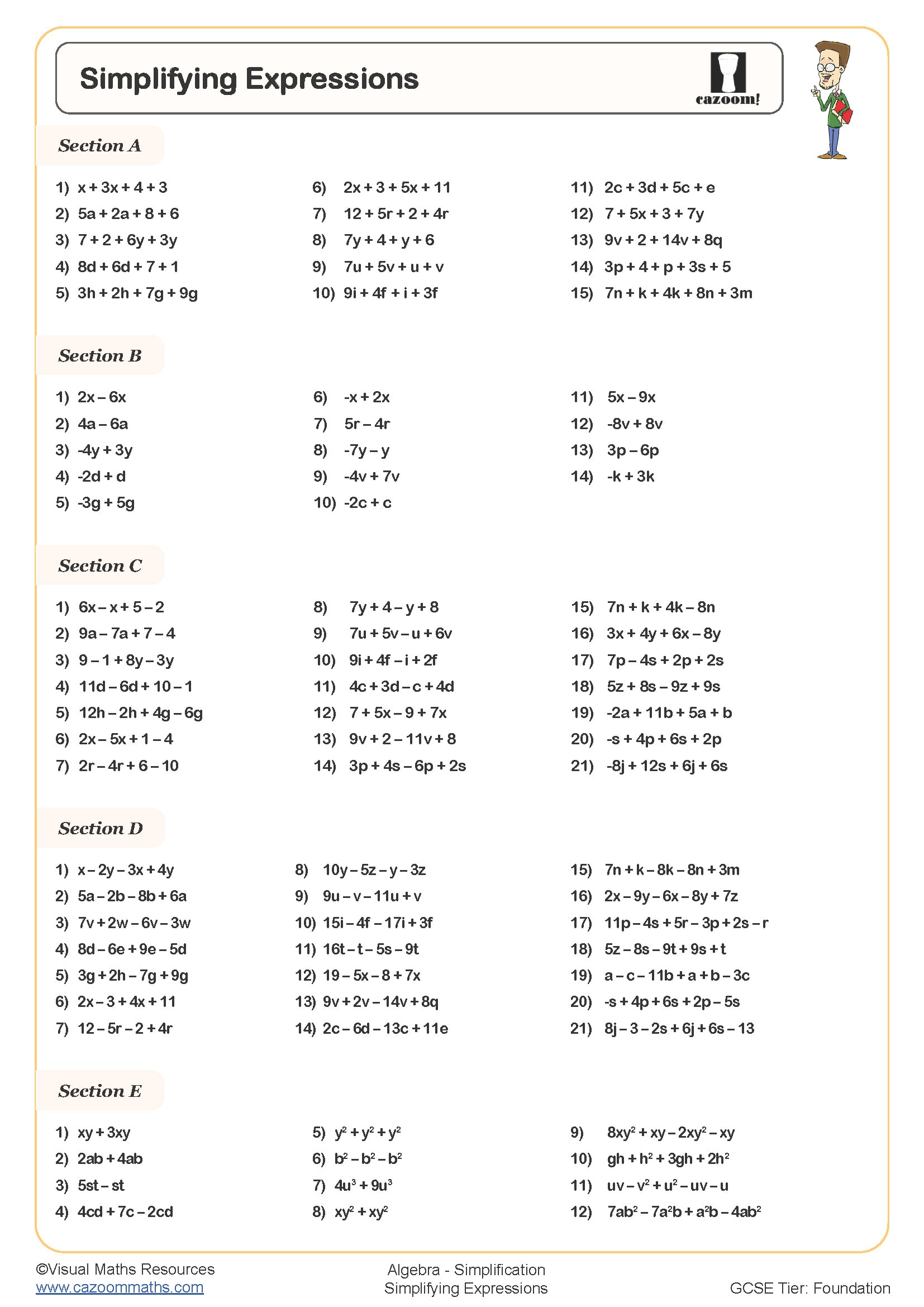
Spotting Like Terms
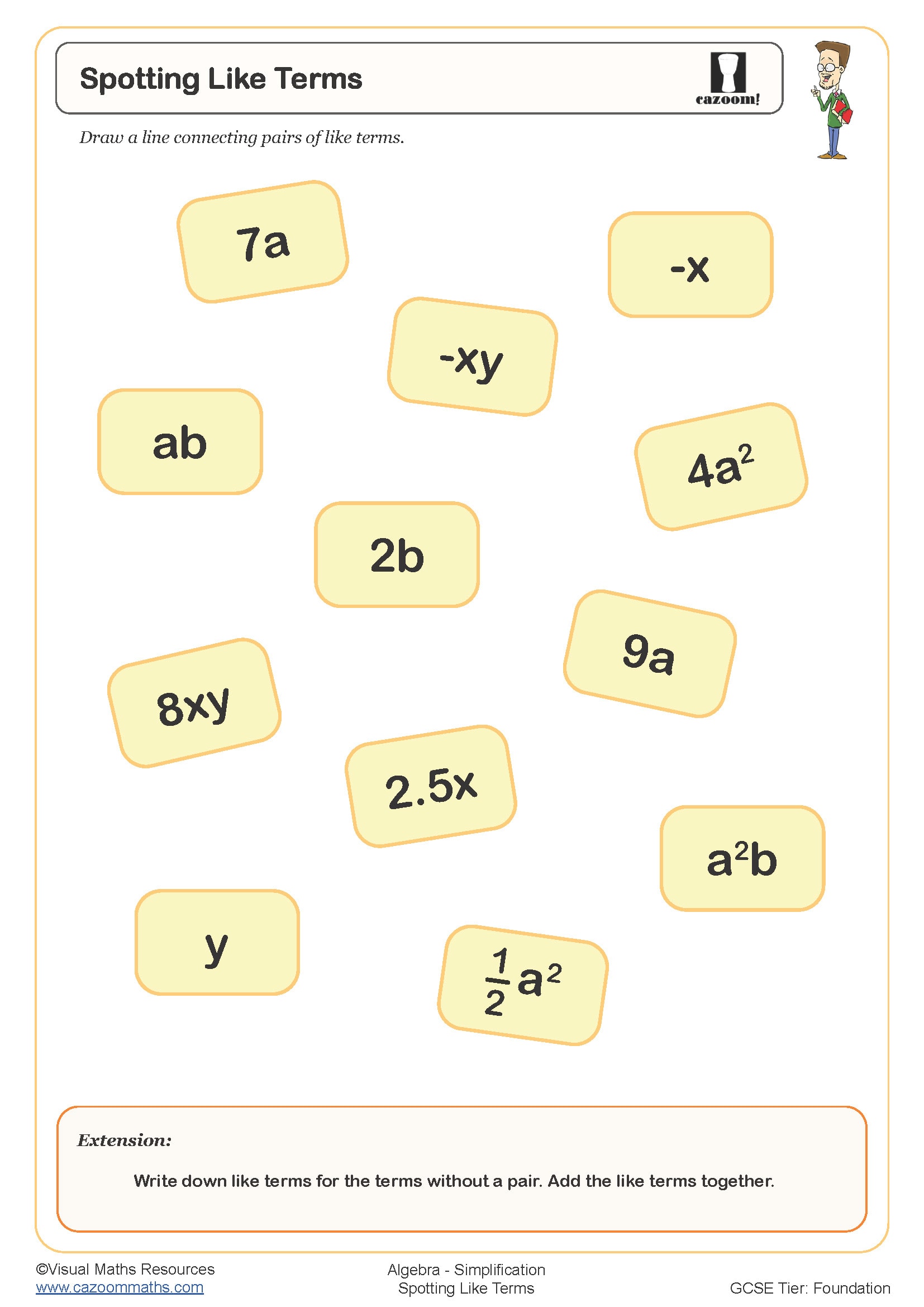
Think of A Number Expressions
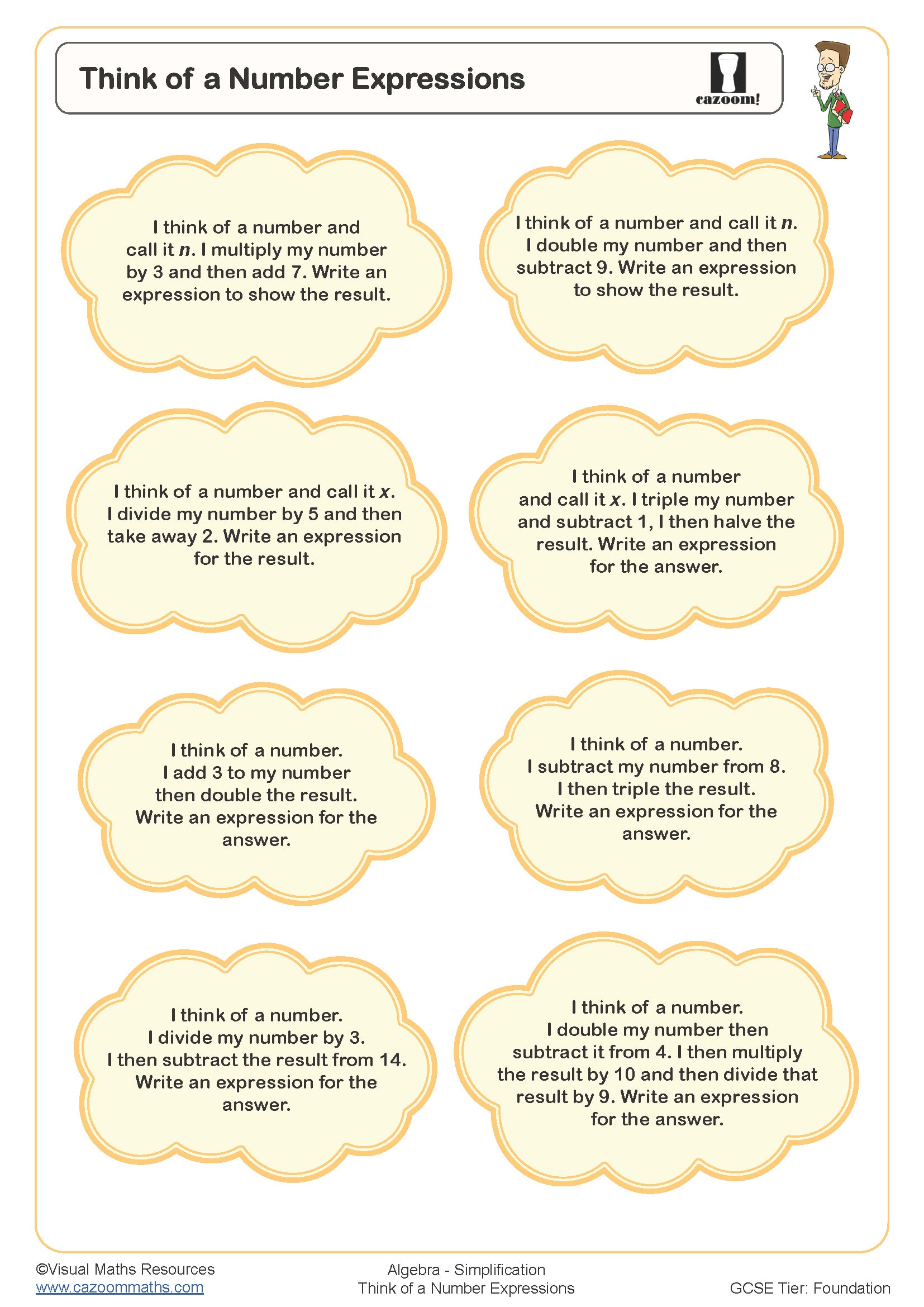
Words and Expressions
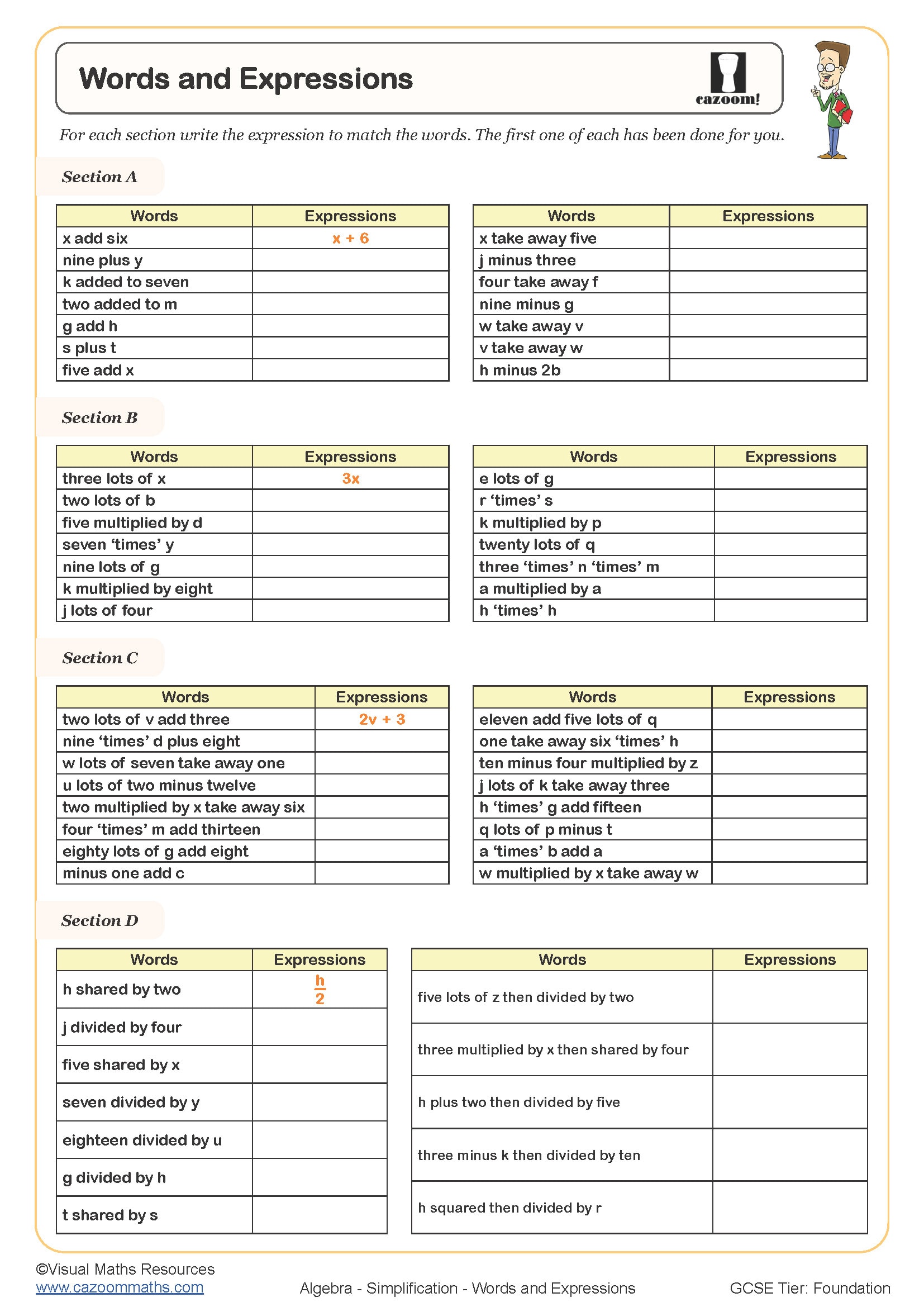
Writing Formulae
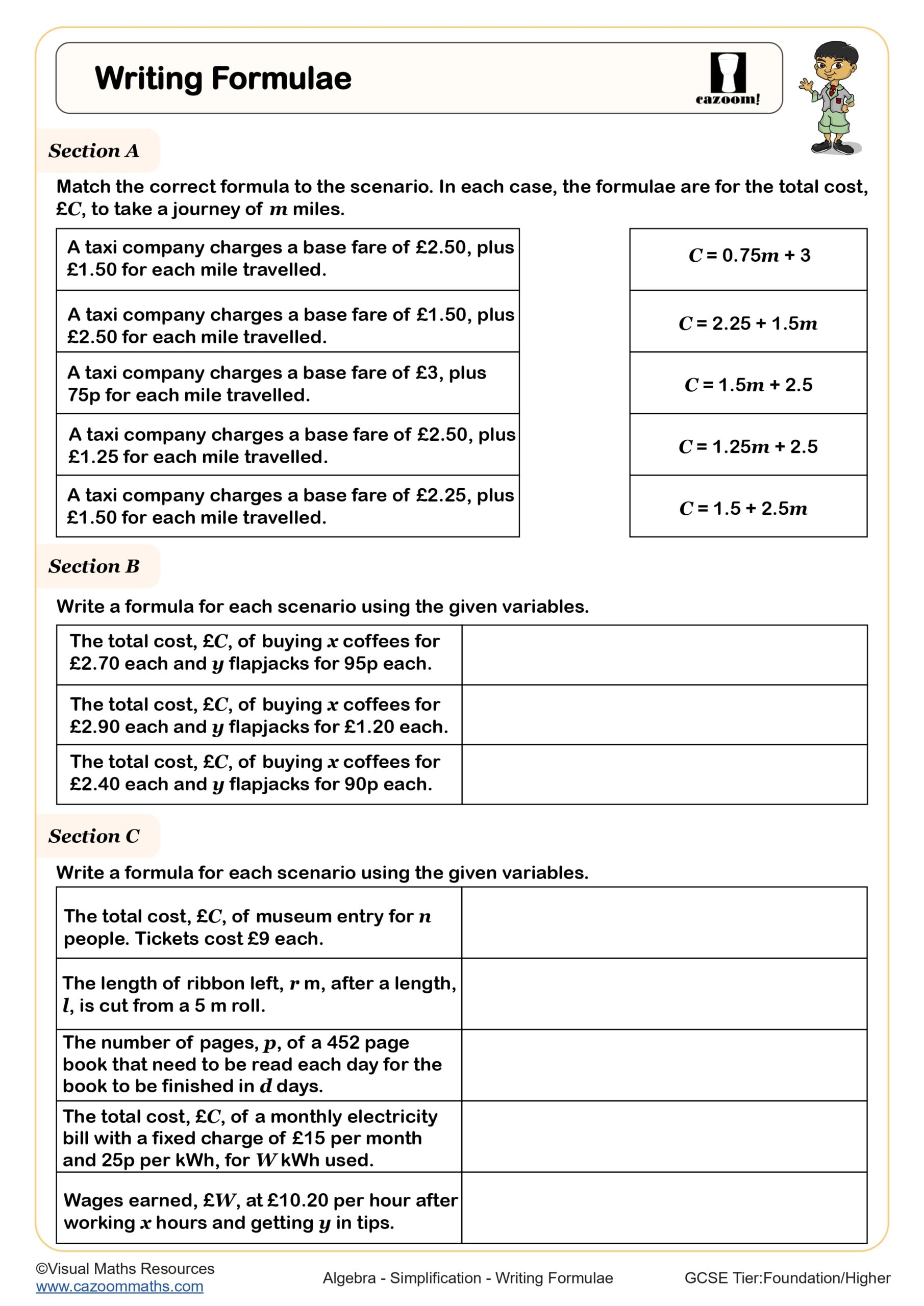
How KS3 Simplification Worksheets Build Efficient Algebra Habits
Reliable simplification comes from spotting structure and choosing efficient moves. These learning materials provide students with a consistent procedure that includes identifying like terms and accurate combination and expansion, or factoring when needed and checking for equivalence. The brief reasoning prompts enable students to concentrate on signs, indices and notation while preventing working memory overload. The result is tidier algebra and fewer avoidable errors across the term.
Specific learning benefits include:
• Develops fluency when collecting and combining like terms
• Builds accuracy with sign handling and integer coefficients
• Connects visual tile models to symbolic manipulation
• Strengthens the use of index laws in simple expressions
• Encourages tidy notation and step-by-step justification
• Supports independent practice for homework or catch-up
What Year 8 Simplification Worksheets Cover and How They Progress
Pupils start with tile and grid models to make the structure visible, then move to notation-based tasks that require precise recording. Later questions ask learners to justify choices and check that expressions are equivalent after expansion or factorisation. Fully worked answers are included to model efficient methods and clean presentation.
The worksheets in this collection include:
• Algebra Addition Pyramids — Combine adjacent terms to fill pyramids using addition structure.
• Algebra Multiplication Pyramids — Build products from factors; reinforce coefficient and variable multiplication.
• Algebraic Multiplication Grids — Use area models to multiply terms before simplifying expressions.
• Algebraic Perimeters — Form perimeters of shapes and simplify like terms neatly.
• Collecting Like Terms - Using Algebra Tiles — Match tiles to notation, then combine variable and constant parts.
• Manipulating Equations — Rearrange linear equations carefully and simplify both sides.
• Simplifying Expressions — Combine like terms, remove brackets, and tidy final form.
• Spotting Like Terms — Identify which terms can combine before any calculation.
• Think of A Number Expressions — Translate puzzles into algebra and reduce to the simplest expression.
• Words and Expressions — Convert written statements to algebraic form and simplify.
• Fractional Coefficients — Work with fractional multipliers and combine accurately in context.
• Language of Algebra — Secure vocabulary, symbols, and conventions for clean simplification.
• Writing Formulae — Create formulae from contexts, then simplify to a clear form.
Why Teachers Rely on Our Year 8 Simplification Worksheets
These worksheets are designed for actual classrooms because they have a fast start-up, simple modelling process and easy assessment procedures. The entry items check for recognition and combining like terms, but later tasks require explanation and correction of misconceptions and cleaner recording, so the same sheet can be used for mixed-attainment groups without needing multiple versions. The depth of reasoning produces differentiation instead of requiring a complete change of the task. The PDF layouts are ready to print, and they reduce setup time, and the answer sheets show the method and the outcome, which supports modelling, self-assessment and consistent feedback.
From Planning to Coding: Everyday Uses of Simplifying Algebraic Expressions in Year 8
Tidying expressions helps pupils streamline calculations and communicate clearly in many familiar settings.
• Comparing mobile plans by simplifying cost rules before substitution
• Estimating materials for design projects using simplified perimeter expressions
• Streamlining spreadsheet formulas for budgets, stock, or forecasts
• Rearranging science relationships to isolate a variable cleanly
• Planning journeys where time or distance rules simplify to quick checks
• Coding loops by reducing update rules to minimal, readable expressions
• Scaling recipes by simplifying multiplicative factors and portions